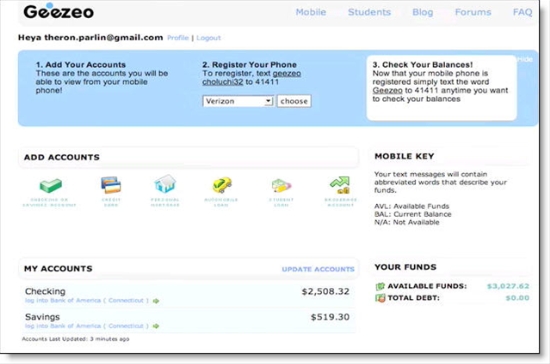 One of the biggest themes at our upcoming FINOVATE 2007: DEMOing the Future of Online Finance (here) is the interesting developments in the online personal finance space (see lineup below).
One of the biggest themes at our upcoming FINOVATE 2007: DEMOing the Future of Online Finance (here) is the interesting developments in the online personal finance space (see lineup below).
As we mentioned last week, the race to add personal financial management (PFM) features to online banking sites is just getting started. To some extent, every bank and credit union supporting online banking already offers extensive personal finance functionality. Think back on how the average person managed day-to-day finances prior to 1997: telephone calls, ATM slips, or in my case, the moment of terror once per month when opening the monthly bank statement.
But now that everyone offers base level PFM, the new race is to provide advanced features to hold on to customers, attract new ones, and potentially cross-sell complimentary products such as debt consolidation, mortgage refis, insurance and so on (see note 1). We also hope to see some fee income from the new features, either through elevated checking account fees, or with premium online banking surcharges (note 2). The latter appears unlikely to happen in the United States unless Bank of America starts charging fees.
At FINOVATE we'll see demos from five key players:
- Two industry veterans, both two-time OBR Best of the Web winners, will be launching significant new versions this fall: Digital Insight (Intuit) and Yodlee
- Two "class of 2007" new startups: Jwaala (coverage here) and Mint (coverage here)
- And Geezeo, which recently changed its name and moved aggressively into personal finance (coverage here)
Digital Insight (Intuit)
 One of the most intriguing acquisitions in online banking in the past ten years was Intuit's purchase last year of online banking platform provider Digital Insight (see coverage here and here). Everyone expected the merged companies to push hard on personal finance, the core of Intuit's much-admired brand. I've had a chance to see the Personal FinanceWorks and Small Business FinanceWorks demos several times and came away impressed. Combined with the depth of Digital Insight's client base, these products have a chance to become the online banking standard within a few years. Intuit is a two-time OBR Best of the Web winner with its Web-based tax services.
One of the most intriguing acquisitions in online banking in the past ten years was Intuit's purchase last year of online banking platform provider Digital Insight (see coverage here and here). Everyone expected the merged companies to push hard on personal finance, the core of Intuit's much-admired brand. I've had a chance to see the Personal FinanceWorks and Small Business FinanceWorks demos several times and came away impressed. Combined with the depth of Digital Insight's client base, these products have a chance to become the online banking standard within a few years. Intuit is a two-time OBR Best of the Web winner with its Web-based tax services.
Yodlee
 Yodlee used to be known as "that account aggregation company." But over the years they've worked hard to shed that image and morph into a full-service financial tools provider. The company offers account-opening tools, bill payment services, personal financial management, long-term archives, and, yes, account aggregation, although it's now more integrated with the company's other services, especially its MoneyCenter personal financial manager. MoneyCenter is the engine behind Bank of America's MyPortfolio which helped Yodlee win its second OBR Best of the Web (see coverage here).
Yodlee used to be known as "that account aggregation company." But over the years they've worked hard to shed that image and morph into a full-service financial tools provider. The company offers account-opening tools, bill payment services, personal financial management, long-term archives, and, yes, account aggregation, although it's now more integrated with the company's other services, especially its MoneyCenter personal financial manager. MoneyCenter is the engine behind Bank of America's MyPortfolio which helped Yodlee win its second OBR Best of the Web (see coverage here).
Notes:
1. For more info on online personal finance, see Online Banking Report #132/133 and #142/143.
2. For more info on premium online banking pricing, see Online Banking Report #109.







































